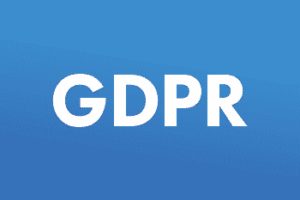Software as a service — also known as SaaS — has seen a major rise in popularity in recent years. It’s a rise that has aligned with the proliferation of cloud technology and for good reason: SaaS platforms are typically cloud-based. SaaS and the cloud are two very affordable, scalable, high-performance technologies, making them top picks for startups.
In fact, the number of SaaS startups is also increasing at a rapid clip, leaving many to wonder, “What is SaaS proof of concept?”
SaaS and Proof of Concept Defined
What is proof of concept in software as a service (SaaS)? Well, first we must understand the SaaS business model and its benefits. Only then can you appreciate SaaS proof of concept.
Software-as-a-service platforms — also known as SaaS — are software programs and applications that users can access over the internet or via an app on the user’s mobile device using a cellular data connection.
SaaS platforms are typically billed on a subscription-like basis, without the need to purchase and install any sort of hardware or traditional software. What’s more, there is no need to maintain or update with SaaS apps or software. All of those tasks (and many others) are managed by the service provider. The SaaS company also handles security, availability, performance optimization and hosting. All of the platform’s data lives on the SaaS service provider’s servers, eliminating overhead associated with on-premises configurations.
SaaS platforms bring many advantages, especially when compared to traditional software. The overhead is significantly lower for enterprise SaaS offerings. There’s also the ease of use and the ability to walk away at any time without losing the big one-time investment that’s required for traditional software systems. SaaS is also associated with improved performance, lower costs of ownership and tremendous scalability.
The aforementioned factors have propelled SaaS platforms into the mainstream, leading to an ever-growing number of SaaS startups. Even established companies are entering the SaaS marketplace with new offerings. But first, you need to convince your boss, investors or stakeholders that your concept for an SaaS platform is viable. Enter: the SaaS proof of concept.
SaaS proof of concept refers to facts and evidence that supports the operational and financial viability of your idea for a SaaS platform. In short, it’s information that proves your idea for a new software platform is a good one; one that is worthy of support. Proof of concept documents typically address a few key areas.
- Concept – The basic concept section of your document will address the general idea for the software-as-a-service platform, in addition to including information about its long-term operation. You’ll want to address questions such as: What is the general idea for your SaaS platform? What features, functionalities and tools will it have? What pricing structure will you use? Where will you host your SaaS platform? What are the SaaS platform’s development costs? What is the development timeframe? What do you expect by way of ongoing maintenance and updates to the SaaS platform? Who will you need to hire in order to make your SaaS concept a reality?
- Market – The marketplace for your software-as-a-service offering is extremely important when it comes to proof of concept. What market segment aligns with your SaaS concept? Are there similar SaaS platforms currently available? Is the market oversaturated or in need of a new, better solution that you can offer? How many apples-to-apples competitors are you facing? What are the overall market conditions like currently? These are a few of the questions you’ll need to address as you compose your proof of concept.
- Finances – Financials are a key consideration for business leaders, potential investors and stakeholders alike, so you’ll need to spend a fair amount of time calculating and presenting these figures. Questions you’ll need to address include the following. How much will it cost to develop the SaaS platform? How much will hosting and data management cost? How much will it cost to hire the staff needed to develop and maintain the SaaS platform? How much will it cost to hire a sales team and marketing professionals? How much will you spend on advertising? What other miscellaneous costs do you expect to encounter by way of one-time expenses and regular overhead? A detailed, accurate view of financials is critical for SaaS proof of concept. Without a clear view of the money side of this equation, it’s going to be very difficult to garner support from prospective investors and business leaders. In fact, a project that is woefully expensive may never get off the ground. This makes the financials a key element in a software proof of concept.
- User Base – Who comprises your user base? In other words, who will be using the SaaS platform? How will they be using it? Is there a real need or pain point that is sufficiently bothersome? Is it bothersome to a degree that will drive people to actually pay to use your software? These are some of the key points you’ll want to address in your SaaS proof of concept document.
- Marketing – Marketing is a key component of any business plan and it’s one that absolutely must be addressed in your SaaS proof of concept. How will you connect with potential customers? What marketing tools will you use? How much will it cost to build and maintain a company website? What advertising methods do you plan to use? How much will you be allocating toward advertising? Advertising is one of the most critical components of a marketing plan and proof of concept. Spreading awareness is essential for success and without advertising and a strong marketing plan, you could end up with a fabulous but secret SaaS platform — one that nobody knows about. That’s not a recipe for success, so this is an area where you’ll want to perform lots of research.
SaaS proof of concept documents are a valuable tool for convincing business leaders and prospective investors that your idea for a software-as-a-service platform — or any Digital Transformation project, for that matter — is a viable and profitable one.
Next Steps After Your SaaS Proof of Concept Document is Complete
Once the project is approved and funded, it’s time to create a software requirements document that can be presented to developer candidates. This comprehensive document details the specs, features, functionalities and other aspects of your SaaS development project.
The LaunchPad Program is designed for startups and established companies that are seeking guidance as they work to launch a new SaaS platform or any other software project. 7T invites you to learn more about this innovative approach to Digital Transformation and reach out if you’re interested in The LaunchPad Program.
Innovative Digital Transformation to Drive Business Forward
At 7T, we specialize in Digital Transformation projects, including SaaS development for web apps and mobile apps. We have extensive experience working with cutting-edge technologies and we can integrate these capabilities into our SaaS platform development projects for exceptional results that are truly transformative for our clients and their businesses.
At 7T, we develop transformative technology using an approach of “Digital Transformation Driven by Business Strategy.” The 7T development team works with company leaders who are seeking to solve problems and drive ROI through Digital Transformation. We then provide collaborative, multi-phased Digital Transformation solutions to clients in all business sectors, including SaaS startups.
Our offices are situated in Dallas, Houston and Austin, but our clientele spans the globe. If you’re ready to learn more about Digital Transformation-as-a-service or are seeking to develop an enterprise digital transformation solution such as a custom enterprise software platform, mobile app or another piece of technology for your organization, contact 7T today.









